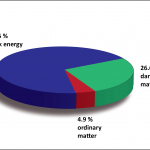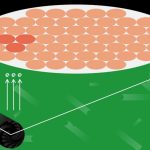From Forbes, Jan. 22, 2021: Fermilab scientist Don Lincoln describes recent findings of scientists studying an unexplained excess of hard X-rays emanating from neutron stars. The explanation for the excess could lie in a hypothesized dark matter candidate called the axion.
dark matter
From Quanta Magazine, Nov. 23, 2020: Physicists plan to leave no stone unturned, checking whether dark matter tickles different types of detectors, nudges starlight, warms planetary cores or even lodges in rocks. Their efforts include the SENSEI and ADMX experiments, in which Fermilab plays a key role.
From Gizmodo, Nov. 10, 2020: Fermilab and University of Maryland scientist Dan Carney and a small group of scientists have begun work on a prototype they say could one day lead to a dark matter detector capable of pinpointing the minute gravitational pull of a particle we can neither see nor feel. The detector is simple in design, but the theory behind its construction amounts to a fundamental rethinking of the search for dark matter.
Researchers have proposed a novel method for finding dark matter, the cosmos’s mystery material that has eluded detection for decades. The proposed experiment, in which a billion millimeter-sized pendulums would act as dark matter sensors, would be the first to hunt for dark matter solely through its gravitational interaction with visible matter.
From Mining.com, Nov. 2, 2020: Three batches of 99.99% pure copper plates mined in Finland, rolled into plates in Germany, shipped across land and sea to Fermilab, and finally rushed into storage 100 meters underground are being used in an experiment to search for dark matter.
From Clarin, Oct. 29, 2020: Cuando era chico, Javier Tiffenberg exploraba las profundidades de los océanos a bordo del Calypso. Si quería ir más lejos, cerraba la escotilla de una nave espacial y se lanzaba a recorrer galaxias brumosas. Sólo era cuestión de sumergirse en El mundo submarino, de Jacques Cousteau, o de sintonizar Cosmos, de Carl Sagan.





